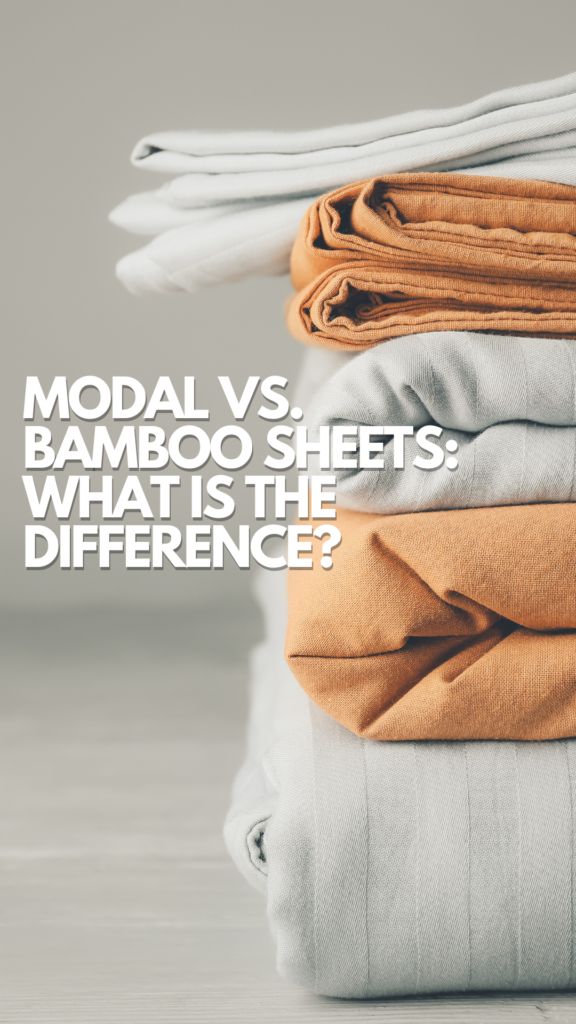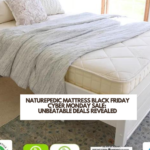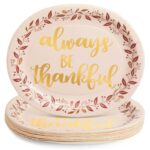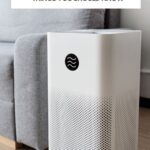Are you trying to figure out the difference between modal vs. bamboo sheets? Choosing the right bed sheets when looking for sheets with natural fibers can significantly impact one’s sleep experience, and two popular fabric types that have emerged as top contenders in recent years are modal and bamboo sheets. These materials aim to enhance comfort and optimize sleep, while also promoting sustainability as they are derived from natural sources. Modal sheets are made from the fibers of beech trees, while bamboo sheets are, as the name suggests, crafted from bamboo; both are celebrated for their softness and breathability.

FTC DISCLOSURE: Some of the links in this post are affiliate links. If you click on them and make a purchase, I will receive a small finder’s fee on the sale. This does not increase your price in any way shape or form. Using these links help support the continuation of this website. All opinions are my own. Thank you in advance.
Understanding the distinct properties of modal and bamboo sheets can enable buyers to make a well-informed decision when shopping for their bedding needs. Each fabric offers unique benefits, both in terms of feel and features that could cater to individual preferences. Modal is often praised for its silky feel and high resistance to pilling, while bamboo sheets are desired for their moisture-wicking capabilities and body temperature-regulating properties.
As consumers become more environmentally conscious, the eco-friendly aspects of these sheet materials also come to the forefront. Modal and bamboo fabric production rank lower on the environmental impact scale when compared to traditional cotton or synthetic textiles. This factor could tip the balance in favor of these materials for those looking to align their bedding choices with a greener lifestyle.
Modal vs Bamboo Sheets: Overview
Modal and bamboo sheets are popular alternatives to traditional cotton sheets, offering unique benefits derived from their respective fibers. Both modal and bamboo fabrics are appreciated for their softness and sustainability, making them attractive choices for eco-conscious consumers.
Modal fabric is a type of semi-synthetic fiber made primarily from beech tree pulp. Through a process of spinning and weaving, this pulp is transformed into a soft and durable fabric. Modal sheets are known for their smooth texture, excellent moisture-wicking properties, and resistance to pilling, which contributes to a longer-lasting bedsheet.
Bamboo fabric, on the other hand, is a natural material made from the pulp of bamboo plants. The fiber is created by breaking down and processing the bamboo into a silky smooth material. Bamboo sheets are renowned for their breathability, hypoallergenic qualities, and temperature regulation, offering a comfortable and cool sleep experience.
Comparing the two, both modal and bamboo sheets exhibit the following qualities:
- Exceptional softness, rivaling that of high-thread-count cotton sheets
- Sustainability, as both fibers are sourced from rapidly renewable materials
- Moisture-wicking and breathability, promoting a comfortable sleeping environment
However, there are some differences worth noting between modal and bamboo sheets:
- Modal sheets tend to be more resistant to pilling, which can extend their lifespan
- Bamboo sheets boast hypoallergenic and antibacterial properties, beneficial for allergy sufferers
Choosing between modal and bamboo sheets depends on personal preferences and priorities. If durability and resistance to pilling are essential, modal sheets may be the better option. However, for those seeking the added benefits of hypoallergenic and temperature-regulating qualities, bamboo sheets might be the more suitable choice. Either way, the rest of this information will help you find the best sheets for you.
Material Composition and Production
How are bamboo sheets made of?
Bamboo bedding is typically made of bamboo rayon, a type of viscose derived from bamboo pulp. The process begins with the harvesting of bamboo, which is a fast-growing and sustainable plant. The bamboo is then broken down into a pulp using chemical or mechanical methods. Next, the pulp is dissolved in a solvent to create a viscous solution, which is then extruded into fibers. These fibers are spun into yarn and woven into the soft, natural temperature-regulating sheets.
As an environmentally friendly material, bamboo is considered eco-friendly and sustainable due to its rapid growth and ability to thrive without pesticides. However, it is essential to consider that the chemical process of producing bamboo rayon can be harmful to the environment if not managed correctly.
You Might Also Like To Read:
15 Best Women’s Organic Cotton Underwear Brands
How are modal sheets made?
Modal sheets are made from lyocell, a type of rayon derived from beech tree pulp. The production of modal sheets involves a similar process to that of bamboo sheets. Beech trees are harvested, and their pulp is extracted through a process that involves dissolving it in an amine oxide solvent and then extruding the dissolved pulp through small holes to create fibers.
This process is more environmentally friendly than traditional methods of making rayon because the amine oxide is a non-toxic solvent, and about 99% of it can be recovered and reused. These fibers are then spun into yarn and woven into the smooth, soft sheets with a super soft feel.
Like bamboo, beech trees are considered a sustainable and eco-friendly resource due to their ability to regenerate naturally and grow rapidly. Modal sheets also possess natural temperature-regulating properties, making them comfortable to sleep on throughout the year.
In both processes, it is essential to source the raw materials from responsibly managed forests and ensure best practices in production to realize the full potential of these eco-friendly and sustainable materials.
Comfort and Feel
Softness and Texture
Modal and bamboo sheets both offer a high level of softness and comfort. Modal sheets, made from sustainably harvested beechwood plant fiber, have a silky and lightweight feel, akin to a sateen weave. These sheets drape well and often feel similar to percale or linen in texture. Bamboo bed sheets, on the other hand, are crafted from the cellulose fibers of the bamboo plant, resulting in a natural softness and a gentle touch on the skin.
Both modal and bamboo sheets grow softer with each wash, providing lasting softness. While they both have a smooth feel, modal sheets might feel slightly silkier and more delicate compared to bamboo sheets. Bamboo sheets have a more textured feel, similar to a lightweight denim or a soft blend of cotton and linen.
Temperature Regulation
When it comes to temperature regulation, both modal and bamboo sheets excel in maintaining a comfortable sleeping environment. Modal fabric offers moisture-wicking properties, handling the task of absorbing sweat and moisture while keeping the sleeper dry and cool. Similarly, bamboo bed sheets are naturally temperature-regulating, keeping sleepers warm in colder months and cool in warmer temperatures.
While both modal and bamboo sheets provide moisture control and temperature regulation, bamboo has the added advantage of being more breathable and lightweight. This can be a crucial factor for individuals who struggle with night sweats or overheating during their sleep. The natural temperature-regulating properties of bamboo make it a great choice enjoyable sleep experience for most users.
Durability and Care
Are modal and bamboo sheets durable?
When considering the durability of bamboo and modal sheets, it’s essential to take into account factors such as pilling resistance, wear and tear, and overall quality. Bamboo sheets are known for their breathability and durability, allowing them to last for many years with proper care. The fibers in bamboo sheets are naturally strong, making them resistant to pilling and maintaining their smooth texture over time. Modal sheets, made from beech tree fiber, also exhibit impressive durability and pilling resistance.
The durability of both bamboo and modal sheets can be affected by the weave used in their production and different processes during manufacturing. For example, a sateen weave results in a smoother, more luxurious sheet, while a twill weave offers increased durability.
You Might Also Like To Read:
6 Easy Ways To Improve Indoor Air Quality
Washing and Drying Modal and Bamboo sheets
Proper care plays a crucial role in extending the lifespan of both bamboo and modal sheets. To maintain optimal quality, bamboo sheets should be washed in cold water with a gentle cycle. It is essential to avoid using harsh chemicals or bleaching agents, as these products may damage the fibers.
If you’re wondering if you should dry bamboo sheets, it’s best not to. For drying, bamboo sheets can be either line-dried or tumble-dried on low heat to prevent damage and shrinkage.
Modal sheets require a similar gentle washing approach. Washing modal sheets in cold water with mild detergents will help preserve their softness and color vibrancy. Likewise, it is best to dry modal sheets on low heat settings, avoiding high heat that could damage the fibers.
One advantage of both bamboo and modal sheets is their temperature-regulating qualities, making them great options for use in various climate conditions. Additionally, both fabrics possess strong moisture-wicking abilities, contributing to their popularity among those seeking breathable and comfortable bedding options.
However, despite their many similarities, bamboo sheets tend to be more affordable and have a lower environmental impact than modal sheets, due to the difference in their production processes and the use of less fertilizer in bamboo cultivation.
Eco-Friendliness and Sustainability
Both bamboo and modal sheets are marketed as eco-friendly and sustainable bedding options due to their source materials and manufacturing processes. In this section, we will examine the environmental impact of both bamboo and modal to help you make an informed decision.
Bamboo is a fast-growing plant that requires little water and no pesticides, making it a highly renewable resource. Bamboo fabric is often made using a process called viscose (or rayon) production, which involves extracting cellulose fibers from the bamboo plant. While this process does involve the use of chemicals, certain manufacturers have made efforts to reduce environmental impact by adopting a closed-loop system that recycles and reuses water and chemicals.
Modal, on the other hand, is a type of viscose derived from the cellulose of beech trees. Like bamboo, beech trees are a renewable resource that can grow without pesticides and requires less water compared to conventional cotton. The production process of modal is similar to that of bamboo viscose, with some manufacturers implementing a closed-loop process to minimize pollution and waste.
When comparing the two, both fibers have certain eco-friendly aspects, such as being sourced from renewable materials and requiring less water than traditional cotton. However, the manufacturing processes for both bamboo and modal can still involve the use of potentially harmful chemicals.
To make choosing the right bedding even more eco-friendly, it’s important to look for certifications, such as OEKO-TEX and Global Organic Textile Standard (GOTS), which ensure that the sheets have met rigorous environmental and social standards.
Health and Hygiene
When it comes to health and hygiene, both bamboo and modal sheets have their strengths. Bamboo sheets are known for their hypoallergenic and antibacterial properties, making them an excellent choice for those with allergies or sensitive skin. Bamboo is a natural material derived from the bamboo plant, which is inherently resistant to bacteria, fungi, and other pathogens. On the other hand, modal sheets are made from viscose or rayon, which is a semi-synthetic material created by processing wood pulp, typically from beech trees. Modal is similar to lyocell and Tencel, both of which are also semi-synthetic materials made through advanced manufacturing processes.
For hot sleepers, bamboo sheets can provide a more comfortable experience due to their high level of breathability and ability to regulate temperature. Modal sheets also offer breathability, but bamboo has a slight edge in terms of keeping the sleeper cool and dry throughout the night.
When it comes to certifications and safety, both bamboo and modal sheets can be Oeko-Tex Standard 100 certified. This means that the fabrics have been tested to be free of harmful substances that could pose a risk to human health. This certification ensures that both types of sheets are safe and healthy choices for consumers.
In summary, bamboo sheets may be the better choice for individuals looking for hypoallergenic and antibacterial bedding options, while modal sheets provide a similar level of comfort and breathability. Both materials hold significant appeal for those seeking eco-friendly and health-conscious bedding choices, and the Oeko-Tex Standard 100 certification provides confidence in the safety and quality of both bamboo and modal materials.
Best Bamboo and Modal Sheet Brands
Bampure is a top brand when it comes to bamboo sheets. They are known for their organic, chemical-free sheets, providing a clean and comfortable sleeping environment. The Bampure bamboo sheets excel in breathability and softness, making them perfect for people who experience night sweats.
Another popular bamboo sheet brand is Cozy Earth. They offer premium quality bedding, with a luxurious and silky feel. Cozy Earth is so confident in their product’s durability that they even provide a 10-year warranty on their sheets.
In the realm of modal sheets, Jersey is a trusted choice. This brand is known for its lightweight, comfortable sheets that feel like second skin. Their softness comes from a blend of modal and other high-quality fibers.
For both bamboo and modal sheets, it’s essential to follow the care instructions provided by the manufacturer. This will ensure that your sheets maintain their softness and durability, while also preserving the natural properties that make them great for sleeping.
When choosing between bamboo and modal sheets, both offer distinct advantages. Bamboo sheets have a more sustainable footprint and offer excellent moisture-wicking properties, while modal sheets are known for their softness and stretchiness.
Investing in the best bamboo or modal sheets can significantly enhance your sleep quality. Brands like Bampure, Cozy Earth, and Jersey provide top-of-the-line options to meet your bedding needs.
Price and Value for Money
When comparing bedding options, price and value for money are critical factors to consider. Both bamboo and modal sheets have characteristics that set them apart from traditional cotton sheets, but how do they fare in terms of cost and overall value?
Bamboo sheets are typically made from rayon, which involves processing natural bamboo fibers to create a soft, hypoallergenic, and absorbent fabric. The manufacturing process has evolved over the years to minimize waste and water usage. As a result, bamboo bed sheets have grown popular for their combination of comfort and eco-friendliness. In terms of price, bamboo sheets generally fall within the mid to high-range, depending on the quality and brand. Some affordable options exist, though higher-quality products come with a higher price tag.
Modal sheets, on the other hand, are derived from beech tree fibers, also undergoing the viscose process to create a silky smooth fabric. They share some similarities with bamboo sheets, including hypoallergenic and antibacterial properties, but are often considered even more luxurious.
Modal sheets can also be more absorbent, making them an excellent choice for hot sleepers. In terms of cost, modal sheets tend to be more expensive than bamboo sheets, but come in a range of prices depending on the quality and brand.
It’s important to note that both bamboo and modal sheets offer advantages over traditional cotton sheets. Bamboo and modal fabrics are known to be more breathable and moisture-wicking, aiding in a more comfortable night’s sleep. Additionally, these alternatives may have a longer lifespan than cotton sheets, thanks to their higher tear resistance and inherent softness.
Ultimately, choosing between bamboo and modal sheets will depend on individual preferences and budget. Bamboo sheets are a great option for those seeking a more eco-friendly and comfortable alternative to cotton, while modal sheets appeal to those who prioritize luxury and supreme softness. Regardless of the choice, both options offer excellent value when compared to traditional cotton sheets.








